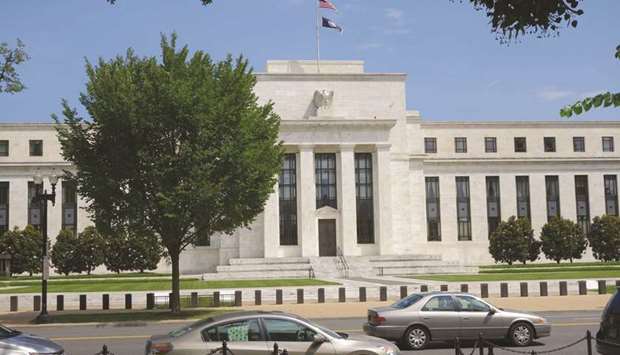Lurking beyond traders’ apparently unwavering confidence that the Federal Reserve will cut interest rates this month is a more nebulous outlook about what the central bank will do after that.
Traders are still pricing a full quarter-point reduction in July, yet they have slowly scaled back views on how much easing will take place for all of 2019 – lowering expectations to 64 basis points from around 80 basis points two weeks ago. At the same time, options traders are still adding to bets the Fed will embark on a series of cuts, rather than a one-and-done approach.
“The market collectively thinks there’s a cut coming this month because the Fed has basically said there will be,” said Kit Juckes, a strategist at Societe Generale SA in London. “But to think there’s a big string of cuts coming after that you have to believe in a serious economic downturn and that’s not clear – especially after the June labour data.”
The addition of a higher-than-expected 224,000 jobs in June seems to make it less urgent for the Fed to take aggressive action. That means it’s even more crucial for traders to scrutinise guidance on the policy path this week as Fed chairman Jerome Powell started his two-day testimony to Congress on Wednesday, the same day the central bank will publish the minutes of its June meeting.
If Powell “makes clear that all is not well, and that he stands ready to do more, then markets might soar but real business confidence might tank,” Michael Every, head of Asia financial markets research at Rabobank in Hong Kong, wrote in a research note.
European bond markets saw a sell-off yesterday following a round of better-than-expected factory data from the region, with German bond yields touching July’s highest level. Still, the European Union downgraded its economic outlook yesterday and an Italian 50-year debt sale Tuesday saw strong demand for duration and yield, drawing over €17bn ($19.1bn) of orders.
Ten-year German bond yields climbed seven basis points to -0.28%, while those on Treasuries rose four basis points to 2.1%. Two-year treasury yields rose two basis points to 1.93% in London trading yesterday, having risen from June’s low of 1.69%.
Dealings in euro-dollar options after the July 5 payroll data show traders have put aside views the Fed may cut rates by half a percentage point this month (a quarter-point is now seen as a lock). Yet even as the amount of easing priced in has been dialled back, those options traders have also favoured buying contracts that profit if Fed officials reduce rates beyond just their July 30-31 policy meeting.
“Hawkish would be anything that puts into question a second cut,” Steven Englander, global head of foreign-exchange research at Standard Chartered Bank in New York, wrote in a report. “Hints at ‘one and-done’ could be devastating to market pricing, even if Powell pointed to a July cut.”
If Powell fails to confirm that rate cuts are coming, some strategies may flounder.
US economic growth slowed in the second quarter, and is tracking about a 1.3% annual rate, according to the Atlanta Fed’s tracker. Proponents of a rate cut have pointed to weak inflation and uncertainty over trade tensions as further reasons for the Fed to ease policy.
Powell might strike a cautiously optimistic tone, which will possibly be a slight disappointment for doves, John Herrmann at MUFG Securities in New York, wrote in a note Tuesday. “But the economy’s more gripping risks suggest further interest-rate cuts are in the offing.”

The US Federal Reserve building in Washington, DC (file).
